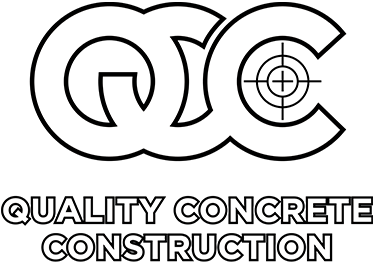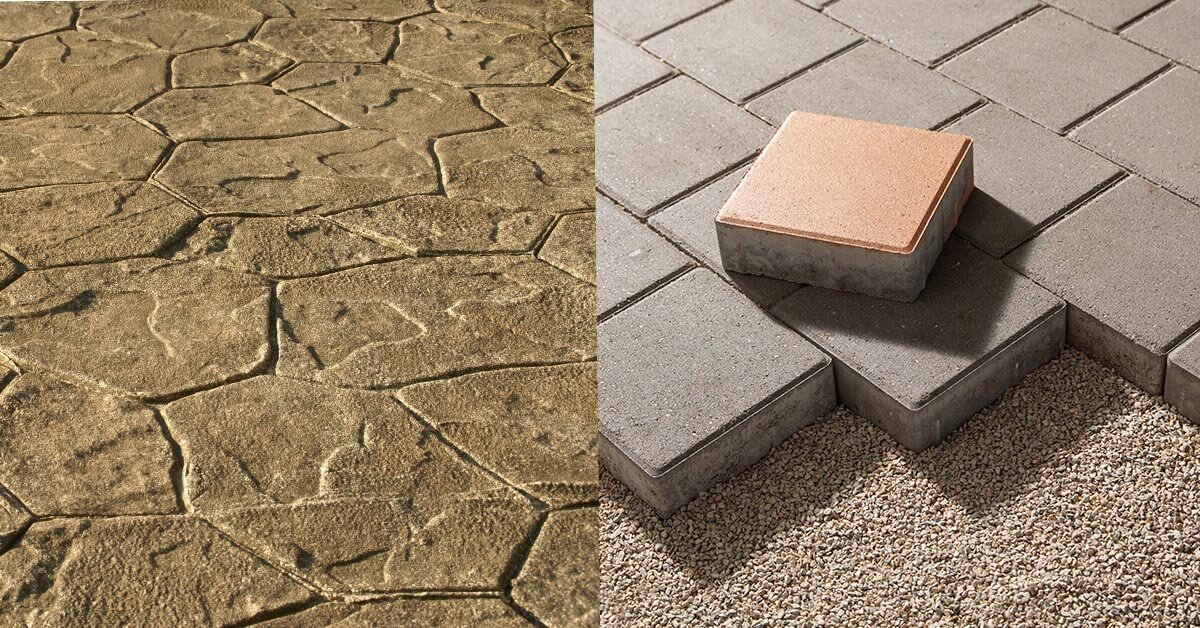When you’re considering a new patio, driveway, or walkway, it’s important to determine what type of material will best enhance your outdoor space. Stamped concrete and traditional pavers are two popular choices that offer different functionality and design. Each presents a unique set of benefits and considerations. Today, we’ll walk through the costs, versatility, and maintenance of each, so you can decide which is best for your project.
Benefits of Stamped Concrete
Cost-Effective Installation:
Stamped concrete is made by pouring concrete onsite, then stamping it with patterns to create a unique texture. It’s often stamped to mimic the look of brick or stone. Generally, it’s more cost-effective to install compared to traditional pavers.
Versatility in Design:
Because it’s made directly from poured concrete, it can be customized in a variety of ways. Homeowners can achieve a customized look that complements their aesthetic preferences by using different textures, colors, and patterns.
Low Maintenance:
Once installed, stamped concrete requires minimal maintenance, so it’s great for a versatile outdoor space. Regular cleaning is usually sufficient to keep stamped concrete looking fresh, and sealing the surface every few years helps protect against stains and wear.
Drawbacks of Stamped Concrete
Susceptibility to Cracking:
Freeze/thaw cycles, soil movement, and settling can lead to cracks in your stamped concrete over time. There are steps to take to mitigate this issue, but it’s necessary to maintain stamped concrete and address any potential cracks before they become more serious.
Limited Repair Options:
Once it’s severely damaged, stamped concrete is difficult to repair, but if you catch problems in time, you’ll have options. Since it’s difficult to insert new concrete that precisely matches the existing pattern and color, it can be challenging to maintain the overall look once replacements need to be made. However, if the damage is less extreme and the slab itself is sound, there are much simpler ways to fix the issue.
Benefits of Traditional Pavers
Durability and Strength:
Since traditional pavers are constructed off-site and installed one at a time (rather than poured and stamped on location), they’re more durable. They can withstand heavy loads and resist cracking better than stamped concrete, making them an ideal choice for high-traffic areas such as driveways.
Ease of Repair:
Unlike stamped concrete, each paver is installed separately. If a paver becomes damaged or stained, it can be individually replaced without affecting the overall appearance. This makes maintenance simpler and more cost-effective in the long run.
Drawbacks of Traditional Pavers
Higher Initial Cost:
Traditional pavers tend to have a higher upfront cost compared to stamped concrete. Because traditional pavers are installed piece-by-piece, the process is highly labor intensive and will be more expensive.
Limited Design Options:
Traditional pavers are purchased already constructed. While they do come in various shapes and colors, the design options may be more limited compared to stamped concrete. Achieving intricate patterns or replicating the look of natural stone might be more challenging with pavers.
Consider Your Space
There’s no one-size-fits-all solution when you’re comparing stamped concrete vs. traditional pavers. Take into consideration the purpose of your space, your budget, the likelihood of wear and tear, and your design aesthetic. However, stamped concrete can be a great option to optimize your budget and your color/pattern options – plus, there’s no need to worry about weeds between pavers or settlement making them uneven. When you’re looking for expert guidance, reach out to get in touch with us at Quality Concrete Construction. We have extensive experience in the installation and repair of concrete in both residential and commercial areas, and we can help you navigate the best choice for your outdoor space.

